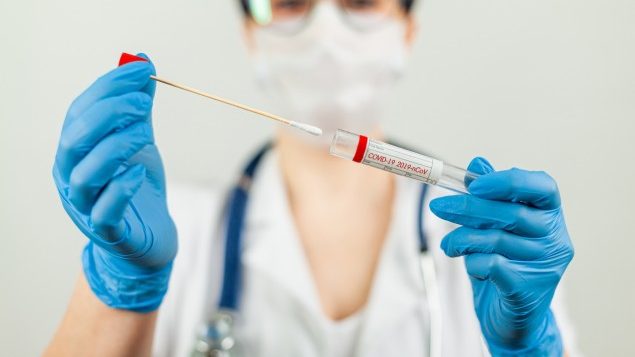It doesn’t feel great, but swab that goes up the nose to test for COVID-19 must go far enough to get a proper sample. Some instructions for this testing may not provide for the most accurate results, says a doctor specializing ear, nose, throat care. Otolaryngologist Dr. Leigh Sowerby of Western University and colleagues found there are wide discrepancies in the instructions for how deep the swabs should go.
He says the swab must be inserted far enough to reach the nasopharynx. That is the upper part of the pharynx at the top of the throat behind the nose. Samples from this area have been shown to be the most sensitive for testing this coronavirus.

Health practitioners are given instructions on how exactly to administer the COVID-19 test and those instructions vary across Canada. (iStock)
Each province, territory issues its own instructions
In his study, Sowerby found less than one quarter of provincial and territorial instructions tell testers to insert the swab deeply enough. In Canada, it is the provinces and territories which deliver health care, while the federal government provides funding.
Sowerby says six provinces and territories recommend the swab be inserted to a depth of four centimeters, only half the distance from nostril to ear. They are Northwest Territories, Nunavut, Ontario, Saskatchewan, Prince Edward Island and Alberta. British Columbia and Manitoba recommended a seven-centimetre depth of insertion, which he says is still not enough
Only Nova Scotia, Newfoundland, New Brunswick and Yukon set out instructions which Sowerby says would reach the nasopharynx and would provide the most accurate sample for COVID-19 testing.
“If we are doing what we are calling a nasopharyngeal swab, the technique for that should be standardized; there is no reason why there should be so much variability,” Sowerby said. “The take-home message is that if we want the most accurate test results, there is room for improvement in the test instructions.
The study was published in the Journal of Otolaryngology – Head & Neck Surgery.







For reasons beyond our control, and for an undetermined period of time, our comment section is now closed. However, our social networks remain open to your contributions.